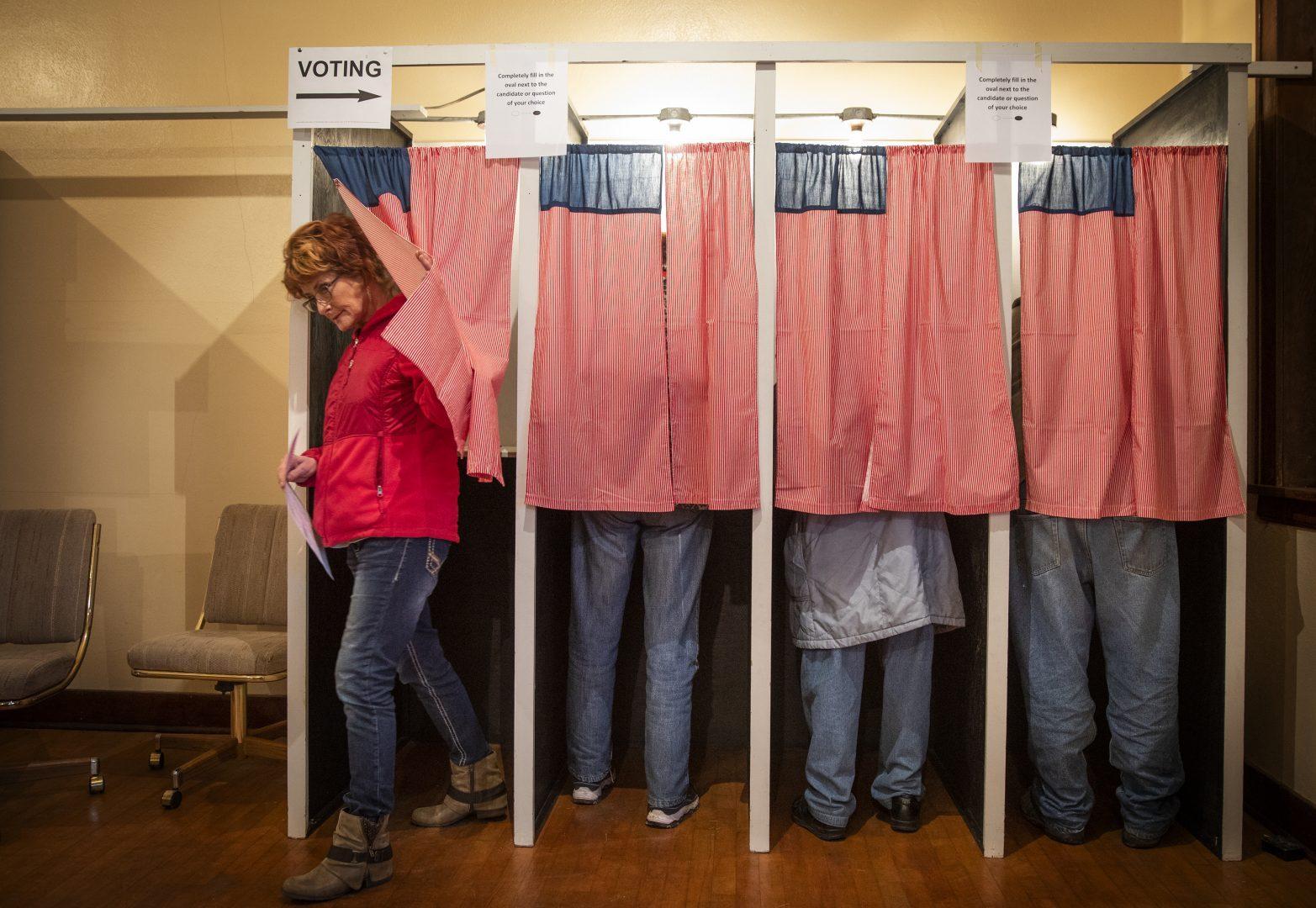By Mark Z. Barabak and Evan Halper
Los Angeles Times
WASHINGTON — As voters began pouring in to polling places across the country on Tuesday, in an election that gives Democrats their first opportunity to claw back into power in the Trump era, signs of the party’s lingering trauma from the 2016 results were plentiful.
Anxious party leaders and strategists avoided boastful projections or presumptuous blueprints for running a Democratic-controlled House or statehouses. And they worried about the political fallout for vulnerable Democrats in Senate races from the fear and loathing that President Donald Trump unleashed in his final campaign swing — false claims over immigrants, nonexistent voter fraud and other hot-button issues.
#Vote2018 — Follow The Collegian and Fresno State Focus on coverage of local elections
Republicans responded by rallying fiercely behind the president, overcoming any qualms about his tweets and temperament to battle critics and fight the so-called Democratic resistance.
The result was a midterm campaign that consumed and convulsed the nation like few nonpresidential elections have in recent times.
All the polling data and evidence on the ground suggesting a blue wave wasn’t taking the edge off for Democrats. Signs of victory were there two years ago for presidential nominee Hillary Clinton, and they were wrong.
“I don’t think anyone’s popping bottles yet,” said John Anazalone, a Democratic pollster with candidates in 20 House races across the country as well as in gubernatorial contests in Nevada, Florida and other states.
“After 2016, everyone’s a little gun-shy,” he said. “We’re confident to a certain level, but we’re waiting for the exorcism of the 2016 election. And that will be the election of 2018. We’re all now in a position of just wanting the votes to be counted.”
The election culminated two years of anger and political agitation, which began virtually the moment Trump took office.
Protesters flooded the streets in nationwide demonstrations the first weekend after his swearing-in, forging an army of dissenters who swelled the ranks of Democratic candidates and volunteers and filled the party’s coffers with a flood of campaign cash.
“A great deal is at stake,” House Minority Leader Nancy Pelosi, the San Francisco Democrat who could be restored as House speaker, told reporters during a swing last month through Florida, a perennial political battleground. “Our fundamental belief in our Constitution. The great respect we should command for everyone in our community. Fairness.”
Republicans agreed, at least as far as the import of Tuesday’s contests.
#Vote2018 — All the election races that matter to Fresno State, in one place
“This election is a choice between Republican results and radical resistance,” Trump told supporters at a pre-election rally in Columbia, Missouri. “It’s a choice between greatness and gridlock. It’s a choice between jobs and mobs.”
To a greater degree than usual, issues such as the robust economy, which stood to benefit Republicans, and expanding healthcare, a part of the Democratic platform, took a back seat to raw emotion. The searing fight over Brett M. Kavanaugh’s Supreme Court confirmation deepened antagonism on both sides. Domestic terrorist attacks, including the mass shooting at a Pittsburgh synagogue and a spate of mail bombs directed at Trump’s critics, including Clinton and former President Barack Obama, put the country on edge.
Trump heightened tensions in the final days of the campaign by focusing on the fraught issue of immigration and, in particular, a migrant caravan inching its way to the U.S.-Mexico border; it reminded both sides what they love and hate about the president.
But passion alone did not rule the election; so did geography. The fight for control of the House and Senate evolved into separate and distinct contests.
In House races, the political terrain tilted heavily in Democrats’ favor, with the key battlegrounds sprinkled throughout cities and the nation’s suburbs, home to millions of female voters, college graduates, Latinos and other minorities at the vanguard of the Trump opposition.
The Senate map, by contrast, unfurled across Trump country: rural, mostly white, older and heavily conservative. Democrats were forced to defend 24 seats — 10 of them in states the president won — compared with just nine for Republicans, only one of them for a state that Clinton won.
Even before the polls closed, one thing seemed certain.
The country is more deeply split than it has been in years. A preelection Wall Street Journal/NBC News poll found that 90 percent of those surveyed believe that political division is a problem for the country. Tellingly, when asked whom they held responsible, most partisans blamed the other party.
Nothing done or said during the long, venomous campaign or in Tuesday’s results suggests attitudes will change any time soon.
(c)2018 Los Angeles Times.Visit the Los Angeles Times at www.latimes.com.Distributed by Tribune Content Agency, LLC.




